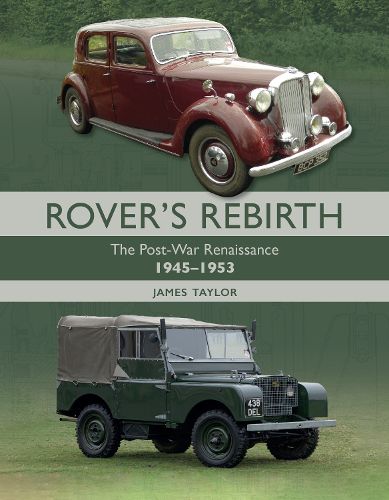Rover's Rebirth
James Taylor

Rover’s Rebirth
James Taylor
Like other British motor manufacturers, the Rover Company spent World War II helping the war effort rather than building cars. Bombed out of its original home in Coventry during the Blitz in 1940, it was fortunate in 1945 to be able to move into the new factory at Solihull that it had been managing on behalf of the Air Ministry. The Solihull factory was not only new: it was huge. Its size presented Rover with a welcome opportunity for expansion, but first the company had to get back into the game. With no new car designs ready, Rover's only option was to re-start production with mildly improved versions of their pre-war models. New models were a long time coming. Early ideas focused on a small economy car, but it soon became clear that this was not what the public wanted. Meanwhile, ambitious plans for a new and ultra-modern car, using mechanical elements that had been under development before the war, had to be put back when there were delays in designing a satisfactory modern body style. As a temporary measure, Rover added their new mechanical elements to modified pre-war style bodies to deliver the P3 models in 1948. The solution was unexpected. Rover's Chief Engineer had bought a war-surplus Jeep for his own use, and he quickly realised that Rover could easily build something similar that civilian users both at home and abroad would find useful. Combining their new engine with the simplest of chassis and body to save time and costs, Rover had the Land-Rover ready shortly after the new P3 ? and its immediate world-wide success took them by surprise. It had plans, too ? far too many to put into production. There were gas turbine-powered cars inspired by the company's wartime jet engine work; there was a hybrid of Rover car and Land-Rover called the Road-Rover; and there were ideas for expanding the existing model ranges and adding more. By 1953, when the story told in this book ends, Rover was ready to introduce new saloons and Land-Rovers that would see it comfortably through the 1950s. Not only had it survived, but it was in better health than ever before. AUTHOR: James Taylor has been writing professionally about cars since the late 1970s, and his interests embrace a wide range of older cars of all makes and nationalities, as well as classic buses, lorries and military vehicles. He has written several books about BMW cars within a portfolio that now consists of well over 130 books. Many of these have been definitive one-make or one-model titles, including a number for Crowood. He has also written for enthusiast magazines in several countries, has translated books from foreign languages, and makes sure he always has something old and interesting in the garage.
This item is not currently in-stock. It can be ordered online and is expected to ship in approx 2 weeks
Our stock data is updated periodically, and availability may change throughout the day for in-demand items. Please call the relevant shop for the most current stock information. Prices are subject to change without notice.
Sign in or become a Readings Member to add this title to a wishlist.


